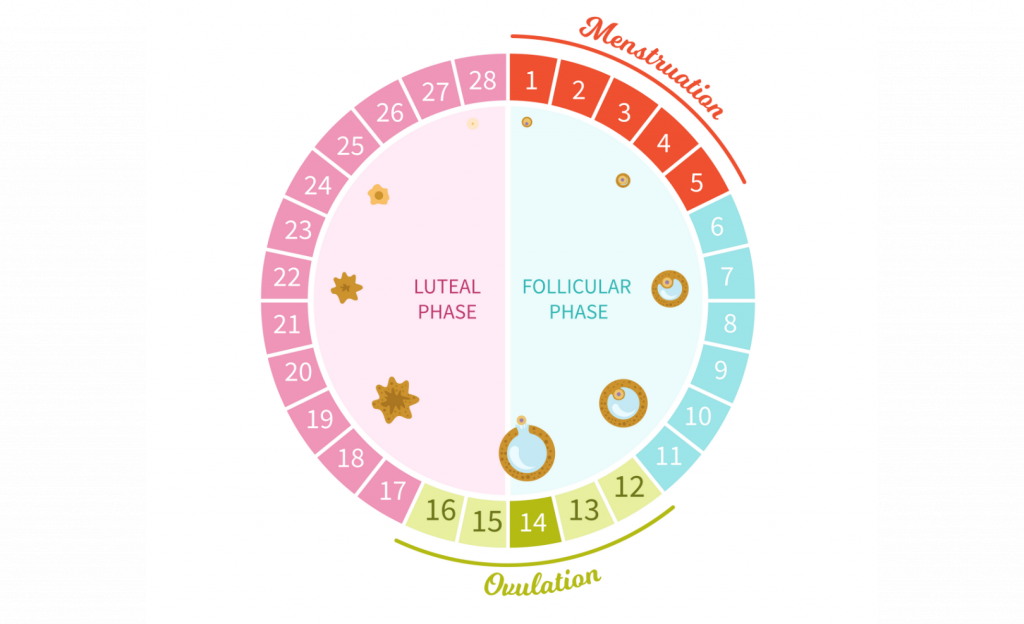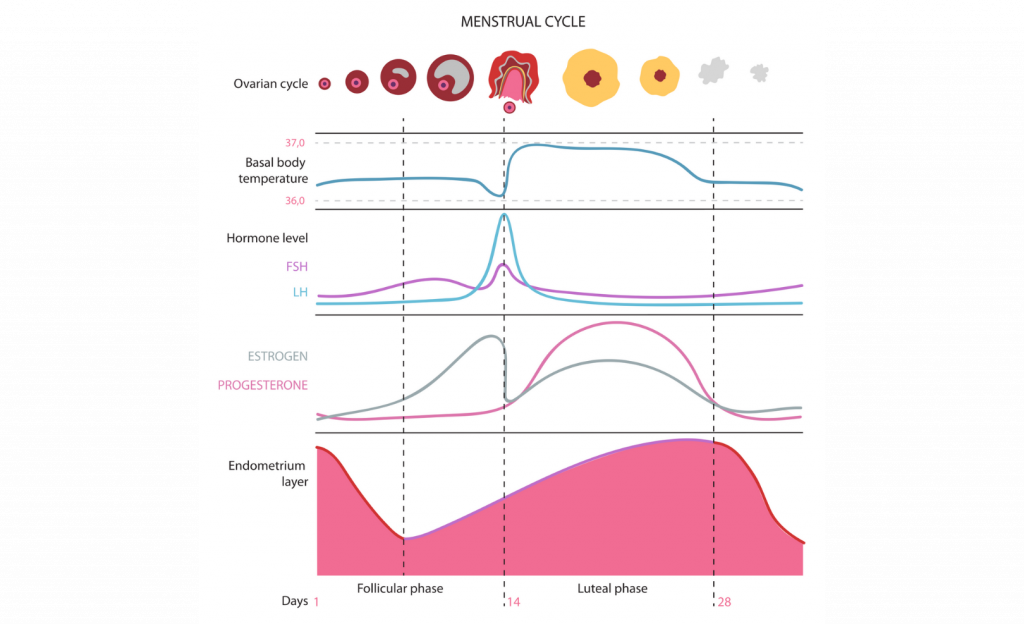The average woman experiences about 35-40 years of menstruating. Yet it is something that many women (unless actively trying to fall pregnant) don’t focus on and just tend to see as an annoyance; an inconvenience, quite happily ignored & forgotten until it turns up again at ‘that time of the month’.
Females are biologically cyclic by nature. We are intuitive, knowing beings, yet we are ignoring our intuition and not listening to our bodies’ cues. With life so busy these days we can be disconnected to the very primitive and influential cycle.
It’s important to know that the reproductive hormones are based on the communication between the brain (particularly the hypothalamus and the pituitary gland) and your reproductive organs. This communication is through chemical messengers, known as hormones. Your menstrual cycle is like an orchestra. The instruments all need to work together and do their part to make the music sound sweet. One bad-sounding trombone makes the whole orchestra sound bad. One imbalanced hormone can have flow-on effects, influence other hormones, and cause menstrual disruptions.
Your Menstrual Cycle
There are two main phases of your menstrual cycle, the follicular phase to mature the egg, grow the endometrium and prepare to ovulate and the luteal phase to support a potential pregnancy. Please note, the below is based on an ovulatory, ‘normal’ menstrual cycle. The cycle can be affected by ethnicity, age, body mass index, stress and lifestyle factors. If you know what is roughly to be expected each month, then you are more likely to understand what is not normal.

1. Menses “Your Period” (approx. Day 1-5) – all female hormones are baseline and relatively low. Bleeding should be relatively pain-free. The flow should just start, without having prior days of spotting, and should be bright red without clots or tissue. It is normal to have some lighter days and some heavier days, but without flooding or gushing. This is a time for rest. A time for clearing the diary of anything but the absolute necessities. A time for only gentle, restorative exercise if you wish. A time of peace, reflection and inward thinking.
2. Follicular phase (approx. Day 1-13) – the first half of your cycle, including the bleeding time. Hormonal signals are sent to grow and mature a follicle (little cyst in the ovary containing an egg) and blood levels of oestrogen rise. You probably find you have more energy, are more action orientated, and more creative. With exercise, your body can handle the push a little more. It’s time to challenge yourself physically.
3. Ovulation phase (approx. Day 13-15) oestrogen peaks, which influences the vaginal mucus. It is normal to notice your mucus is ‘egg-white’ in appearance for a day or two. Clear, stretchy and sticky. When the follicle has matured, this induces a sudden surge of a hormone called luteinising hormone (note – this is the hormone tested on ovulation prediction test kits), which then triggers the egg to be released… ovulation. Some women experience ovulation sensations, some experience nothing. Both or normal. Pain is not.
4. Luteal phase (approx. Day 14-28) – the second half of your cycle. The remaining empty follicle has a new job of producing progesterone. Progesterone is a feel-good hormone, with anti-anxiety properties. WHAT?! You might say?? Feelings of irritability, anxiousness, or anger is a good clue your hormones are imbalanced. Oestrogen, which has now significantly dropped in the luteal phase, will have a small rise again. The luteal phase is a time for productivity. For exercise, focusing on weight training and building strength is preferred during this time.
Yes, there can be minor variations to the above, which all fall within the scope of normal. Start noting in a chart, or an app all the symptoms you experience throughout the month, then you can start to understand your normal patterns.

Normalising Periods
I believe society is slowly changing for the better and periods are becoming less of a taboo subject, but many of us are still not connecting to our menstrual cycle. We fail to tune in to the ebbs and flows in the changes of hormones.
We are not stagnant or robotic beings. Women can be using their menstrual cycles to their advantage, if they accept and learn to move with it. Education is empowerment. If you know and understand your cycle you can tune in to the cues and adjust to live more intuitively to your needs.
In health and happiness,
Sage Naturopathics (Burleigh Heads, Gold Coast)
If you are having trouble balancing your hormones or falling pregnant, please reach out, we would love to help you: CONTACT US
References:
Mihm, Gangooly & Muttukrishna (2011) ‘The normal menstrual cycle in women’
https://www.sciencedirect.com/science/article/abs/pii/S0378432010004148
Bull et al (2019) ‘Real-world menstrual cycle characteristics of more than 600,000 menstrual cycles’ https://www.nature.com/articles/s41746-019-0152-7
Vitti (2020) ‘In the FLO: unlock your hormonal advantage and revolutionise your life’




